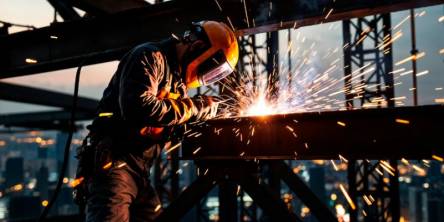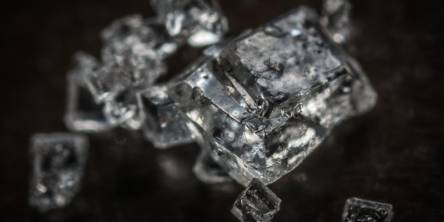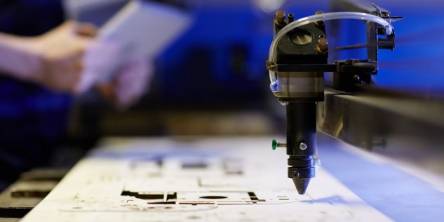Methods for Testing Hardness of Ceramics
Ceramics material imposehigh hardness property due to their built in structure and modeling. Abrasion resistant ceramics have great industrial application as they show resistance to scratching or scuffing. Hardness is one of the common characteristics of a ceramic that helps to characterize- densification, fracture and resistance to deformation.
Industrial applications of ceramics:
- Cutting tools, prosthetic hip-joint balls and sockets.
- Ballistic armor.
- Optical lens glasses.
- Molds and dies.
- Seals and valves.
The loading rate is another determining factor that affects the hardness of material. The principle of regular ceramic resistance has different requirements for the control of loading rate during the indentation process. An analysis suggests, a variety of indentation loading rates can be achieved on a sintered silicon carbide, steel and aluminum oxynitride. Current standard methods for static resistance measurements limit the rate of load application, but there is extensive inconsistency in the requirements.
Ceramics are more brittle than metals and can have corresponding stiffness (modulus of elasticity) and similar strength, mainly in compression. But in a tensile test, they are expected to fail at a very lower applied stress. It is because the surfaces of ceramics always contain minute cracks (Griffith cracks), which enlarge the applied stress.
Some of the important hardness testing methods are as follow :
- Rockwell Hardness Test: It is the most widely used and oldest hardness testing methods. A hard file on the test piece is used to check how difficult it is to remove the material. Resistance can be read on two separate scales. The most conventional is the "C" scale that uses a diamond cone. The less accepted "B" scale utilizes a ball corresponding to that used in the Brinell test.
- Brinell Hardness Test: Brinell hardness is determined by forcing a hard steel or carbide sphere of a precise diameter under a specified load onto the surface of a material and measuring the diameter of the indentation after the test. The Brinell hardness number is calculated by dividing the load used by actual surface area of the indentation. The result is a pressure measurement, but the units are mainly not confirmed.
- Vickers Hardness Test: It is the method used for measuring the resistance of the ceramics and metals. The surface is subjected to a standard pressure for a standard length of time by means of a pyramid-shaped diamond. The diagonal of the consequential indention is measured under a microscope and the hardness value read from a conversion table.
- Knoop Indentation Test: This method is used to determine the micro hardness of the material. Knoop’s test comprises of a pyramid-shaped diamond indenter with apical angles of 130 and 172 which is pressed against a material making a thombohedral impression with a diagonal seven times longer than the other. The hardness of the material is determined by the deepness to which the Knoop indenter penetrates.
- Shore Durometer Hardness Test: It measures the resistance in terms of the elasticity of the material. In this test, a diamond-tipped hammer in a glass tube is dropped from a particular height on the specimen to be tested, and the hardness magnitude depends on the height to which the hammer rebounds. The harder is the material, the greater is the rebound. The results obtained from this test are a useful measure of comparative resistance to indentation of various polymers. However, Shore Durometer hardness test does not predict other properties such as strength, resistance to scratches, abrasion, and wear. It should not be used alone for the product design specifications.
Hardness is directly equated to wear resistance and the property of hardness in ceramic is of distinguished magnitude. It depends on the capability of the material to bear the penetration on its surface through a combination of plastic flow and brittle fracture.The abrasion resistant ceramic shows a unique ability to withstand mechanical phenomenon like wear, rust, erosion, corrosion, scrapping, etc. These mechanical side-effects are the prime reason for manufacturing activities being low on returns and high on cost. These ceramics ensure that the overall time related with the process is low and manageable.
These ceramics are available in various forms like Nitride, Boron, Tungsten, etc.Some of the common applications of these are found in - forming, polishing and lapping processes in foundries, armored vehicles, pumps, jets, etc. The general consumption components are casted and made from wear resistant ceramics to counter for the downtime expenses and high replacement costs.
Similar Articles
When you see a steel ship in the harbor, the first impression is usually sheer scale.
Explore CNC turning—its components, process, benefits, applications, and future trends shaping modern precision manufacturing in various industries.
In the competitive industry of car manufacturing, attaining exceptional performance along with an innovative design needs the incorporation of modern manufacturing technologies
Facing delays, quality issues, or supply chain problems in hardware manufacturing? Learn the top 7 challenges—and practical fixes—to streamline production.
In the rapidly advancing landscape of high-tech manufacturing, electronics, and materials science, diamonds are no longer just gemstones they’re high-performance materials redefining what’s possible in technology.
A business in the manufacturing industry today has to ensure that it chooses the precision-engineered components suppliers keenly since the competition is very stiff
Selective Laser Sintering, or SLS, has established itself as one of the most reliable and widely used 3D printing technologies. This method is valued for its ability to produce complex, durable, and high-quality parts without the constraints of traditional manufacturing.
In the retail and display industry, the visual appeal of products is paramount. Customers are constantly drawn to displays that are not only eye-catching but also provide an immersive experience.
As previously established, CO2 laser technology operates by shining a high-power infrared beam on a mixture of gas that contains carbon dioxide, nitrogen, and helium. This technology is well known for the fact that it is able to engrave onto a variety of materials such as wood, glass, plastic, leather, and even some metals with high precision and without contact.









